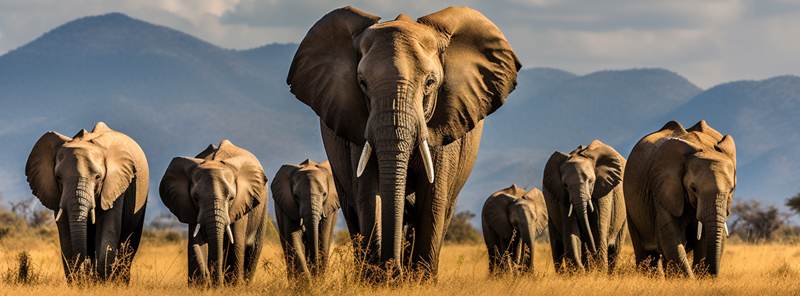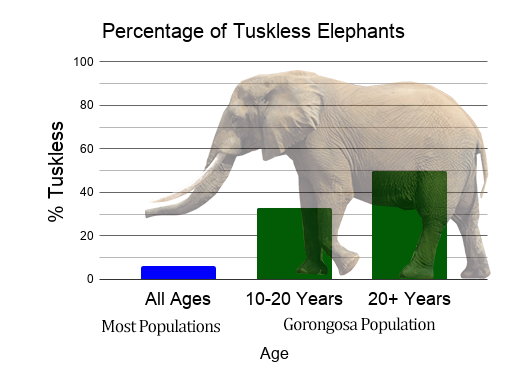
African Elephant - Change Over Time
Early estimates of elephants on the continent of Africa suggest that there were as many as 26 million elephants living there in the 1500s. As Europeans began to explore the continent, demand for ivory increased. It was used to make combs, pool balls, knick-knacks, and even piano keys. By 1913, the African elephant population had dropped to an estimated 10 million.
Elephant slaughter increased in the 1950s, where it is estimated that 250 elephants were killed per day. In 1978, the elephant is listed as threatened under the United States’ Endangered Species Act. This limited the trade of some ivory. Still, ivory trade continued across the world. By 1979, there were only 1.3 million elephants left.
A ban on the international trade of ivory goes into effect in 1990, though the population of elephants is now fewer than a million. Despite the bans, there is still a demand for ivory in countries like Japan and China. This drives the illegal trade of ivory. Illegal hunting of elephants, or poaching, occurs at alarming levels. It is unknown how many elephants survive in African, many herds are protected in preserved areas, like Gorongosa National Park in Mozambique.
Elephant specialists that study the elephants in this preserved area have collected data on the herds in the park. They noticed that while all the males have tusks, about 50% of the females in the park that are over the age of 20 years do not have tusks. When compared to the elephant populations across Africa, the frequency of tuskless elephants is only 6%.

1. Why are elephants killed in Africa?
2. Why do bans on ivory trade not stop elephants from being slaughtered?
3. How do countries in Africa protect elephant herds?
4. How are the elephants at Gorongosa National Park different from other elephant populations?
5. Suggest a reason for this difference.
Watch “Selection for Tuskless Elephants” (~7 minutes)
https://www.hhmi.org/biointeractive/selection-tuskless-elephants
1. What happened in Mozambique between 1977 and 1992?
2. Why did soldiers kill elephants?

3. What is unusual about the elephant populations found in Gorongosa now?
4. What are tusks?
5. How do elephants use their tusks?
6. How does a MALE elephant use his tusks?
7. What would probably happen to a male elephant that doesn’t have tusks?
Therefore, tusklessness in male elephants is a ___________ (rare/common) trait.
8. What percentage of females are typically tuskless in an elephant population less affected by poaching?
9. Tusklessness is an ________________________________ (inherited/acquired) trait.
Tuskless females tend to have _________________________ (tusked/tuskless) offspring.
10. Use the theory of evolution to explain the observation that there are no tuskless males in the park. WHY do males retain their tusks, when 50% of females lost them.

